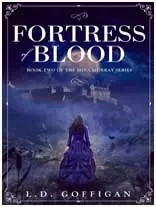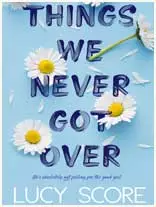How To Publish A Children's Book In 12 Simple Steps For New Authors

Do you have fantasies of having your children’s book published and possibly out there inspiring young children? It is also fun to write a children’s book and publish children’s book; however, the process has to be well planned. Below are 12 easy and straightforward steps to follow to self-publish the children’s book whether one decides to go the traditional way or self-publish their great children’s story.
1. Research Your Target Market
However, it is important to get acquainted with your target population before proceeding to the actual analysis. Children's literature encompasses various categories: C
Picture books: Youth with 0-6, highly illustrated and uses simple words.
Early readers: Ages 6-8, simple sentences, the text is best repeated several times in order to enhance fluency.
Chapter books: Will be interested in ages 7-9, longer narrative, with chapters/sections.
Middle grade: Dependent students, early treatment of complex themes, plots, and this would have higher word count.
Young adult: 12-18 years, defined characters, serious emotions and adult material.
Current children literature is an important area of study to help you understand trends in the industry and expectations held by readers and by visiting bookstores and making yourself conversant with the different children authors.
2. Edit Your Manuscript to Perfection
Based on this, it can be said that the narrative you create is the core of your children’s book. Edit the piece for at least two drafts, and cut out any bits that do not span across the heartstrings of young audiences. It is also advisable to get professional editing as the service provides a critical view and insightful suggestions. When self-publishing, find an illustrator that will best suit the aesthetic you are going for. A well-polished manuscript and magnificent illustrations will attract the attention of the agents and publishing houses (both the conventional and those offering self-publishing services) as well as enchant readers at large.
3. Choose A Publishing Path
There are two main paths to consider: conventional way of publishing or the new way of self publishing.
Traditional Publishing
In this case, a publishing company undertakes editing services, marketing, and distribution, together with printing costs. This route sometimes means identifying a literary agent dealing with children's books who will facilitate the publication of your children’s book. A good agent should be able to assist the writer in writing a catchy query letter and a brief description of the story and put your manuscript in the right publishers.
Self-Publishing
It provides full control over the creative process and lets out for publication much faster. But you are solely liable for the final cut, layout, promotion, and delivery of the product.
4. Find An Agent Or Publisher
Literary Agent: The targeted research agents include agents who concentrate on children’s book authors. When consulting agents look for the ones that specialize in the type of work you are offering for the specific audience you are targeting.
Traditional Publisher: Check on submission guidelines of clips from other famous children’s book writer. It must be noted that most of the publishers have blogs with descriptions of what is expected of the author and where to send the manuscript.
5. Looking for that Perfect Illustrator
Children’s books call for illustrations, and they must be beautiful because they are obligatory for children’s books. If your story would be enhanced by interacting with a paid children’s book illustrator, then do so. Take a list of children’s book illustrators and go through their portfolio to choose and select the best one to compliment your idea.
6. Set Up Your Book With Retailers
If you chose to self-publish than you would need a method of distributing your book out in the market. Some options are uploading an MS to a publisher, creating a cover, determining a price, and selling the book as an e-book and a print on platforms like Amazon KDP. Here one can also load the book to be accessed with different devices and fix the way it looks on a computer, or a piece of paper.
7. Welcome to Publishing Day Preparation.
If you intend to self publish a book, you must have a mechanism through which you will influence the market to get interested in your product. To popularize the sale of your book, go to the social networking sites, approach book bloggers, and participate in events within your area. Another fascinating way of getting in touch with the fans and explaining what your book is about is to create a site with its help. It would be best to have a launch of your book, have a reading, or even set up a virtual event to get people’s interest in your work.
8. Recognizing Various Kinds of Children’s Literature
As mentioned earlier, there are various categories within children's literature, each with its characteristics:
Picture books: Often include 32–40 pages and are characterized by illustrations and a rather simple plot.
Early readers: Typically have a length of up to 32 to 64 pages, and which contain simple sentences and patterns of repetition.
Chapter books: May contain between 64 and 128 pages with longer chapters and elements of an emerging plot.
Middle grade: Generally, it covers between 128 and 256 pages with embellished concepts, characters and the plot.
Young adult: May range between 256-400+ pages, exploring themes that are appropriate for mature children and young adults and writers their books in the style that can be between children’s books and books for mature audiences..
9. The Importance Of Illustrations
In children’s book, good drawings are not only the decorative elements, but they are the inalienable parts of the plot. Interesting pictures attract children into the text, assist the child to comprehend what is being read by coming up with ideas on their own.
There are certain selection criteria you should apply whenever you consider hiring a children’s book illustrator These include such things as the style of work of the illustrator, his or her experience in children’s books illustration, and the capacity of the illustrator to capture the spirit of your particular story. The right artist collaborates with you to create the most appropriate characters and develop an atmosphere in your writing that complements your ideas.
10. Self-Publishing: A Better Path For Some Authors
Thus, even though traditional publishing has some benefits, self-publishing is more suitable for many children’s book self-published authors. Here are some of the benefits:
Creative Control: However, unlike the traditional published books, you are in charge of every aspect of the book; from the minting to the final cover design and even advertising.
Faster Timelines: One can self-publish a book thus avoiding the regular publishing channel, maybe getting the self-published book to the readers in the shortest time possible.
Higher Potential for Royalties: You remain with a bigger percentage of the initial amount of money you make from the books unlike when you are under a publishing company.
There are also many examples of one’s children books which have been published trough Self-publishing companies’ authors who managed to conquer the market and become successful. Looking for other self-published authors in the same category of your work may be very helpful and informative.
11. Promoting Your Self-Published Book
Some of the strategies are listed here, self-published book marketing is an active process. Here are some strategies to consider:
Social Media: Engage with possible target audience through Instagram, Facebook, and/or Twitter, as well as share fragments related to the book and the illustrations. Communicate with the readers and other children’s book writers.
Book Blogs: A large number of blogs featuring adult literature and living pay their attention to self-published children’s books. Contacts bloggers that may be willing to review your book.
Local Events: Read books to children, attend signing events, and go to fairs within your region for interaction with the people.
Online Marketplaces: Market your full children’s picture books on platforms such as Amazon KDP to promote your book so that children and parents searching for the books can easily locate them.
12. Celebrate Your Achievement
The publishing of your children’s book is a notable accomplishment. I want to launch my book with delight and feel happy about the trip I have taken. Feel happy and lucky, also, it is possible to go through independent children’s book publishers and communicate with them in various online forums.
Please do not forget, children books is a world that is always actively updated and developing. By following this guide you will learn how to successfully create a story and publish it, for children around the world, either through a conventional or a self-publishing model.
limited Time offer
- 00
- 00
- 2





